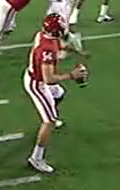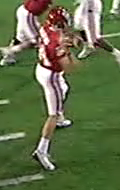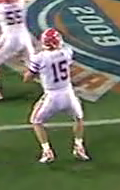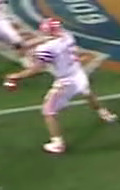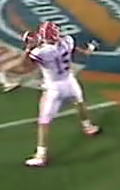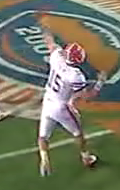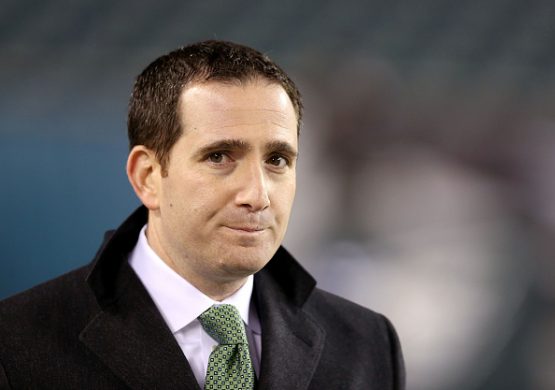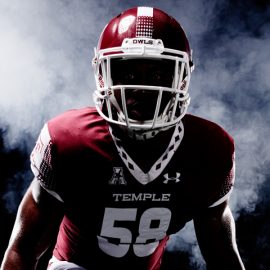There seems to be no way around the price tag for a championship-quality NFL quarterback. If you find your guy, you’ll end up spending about $20 million a year to keep him.
If you cobble together a substitute group of quarterbacks for one season with championship upside, as Chip Kelly has done in Philly, you still end up spending about $20 million.
Sam Bradford— $13 million in 2015;
Mark Sanchez— $5.5 million in 2015;
Matt Barkley— $0.6 million in 2015;
Tim Tebow— $0.6 million in 2015;
G.J. Kinne— $0.4 million in 2015.
The economics of investment at the QB position is especially challenging for the Eagles this summer because of the uncertain health status of the biggest piece in your plan. Of course, if Sam Bradford were certifiably ready to lead your team through a winning 16-game schedule, he would cost a lot more than $13 million to keep.
So you balance risk with potential reward— but you still end up spending $20 million for the position group this season.
Facing the reality of these cost numbers almost makes me wish we had stayed put with the predictable duo of Nick Foles and Mark Sanchez— and drafted a developmental QB in 2015 (assuming Barkley and Kinne’s days in Philly are numbered). The cost of the position group would have been cut in half.
Nobody will care about cost savings if Bradford actually comes through on time with a successful rehab from knee injury and a lights-out performance during the regular season. But the accounting gene in me wonders what the actuarial odds are that Bradford will give you 8 good games, let alone 16…or whether he can remain standing if the team does make the playoffs.
If Bradford still appears limited in his range of motion when training camp starts in late July, I don’t expect Chip Kelly to wait long before pulling the trigger on another QB move. Maybe then is when we’ll see Bradford traded for another journeyman starter who’s healthy. By then the whole Phil Rivers cloud of uncertainty will have lifted, too.
To his credit, Mark Sanchez seriously thinks he is competing with Bradford for the starting job here.
As reported by Tim McManus, asked if he still expects there to be an open competition despite the presence of Bradford, Sanchez replied: “Absolutely. That’s the way I understand it.”
No matter how it plays out, I am convinced there really is no way around the minimum wage for a championship-quality investment in the QB position—and that number seems to be $20 million.
* * * * * * * * * * * * *
It’s ironic that Sam Bradford and Tim Tebow now find themselves on the same roster. Back in 2009, they were constantly compared to each other as 20-year-old prospects, and the argument was which QB would be the biggest winner in the NFL.
Funny how that has played out…
I remember back in 2009 I used to go to a Florida Gator blog to get research on Tebow. This blog was written by a Florida graduate student named Dave Wunderlich. I don’t think he does the Gator blog anymore— it was called “Year 2- Gator Football and More” …. but the blog still lives in the archives. Dave now writes for SB Nation and provides SEC football coverage at Team Speed Kills.
Anyway, at the height of the Tebow-Bradford comparison frenzy in 2009, Dave Wunderlich did an interesting piece analyzing the release speed of Tebow’s throwing motion relative to Bradford’s.
You can hit that link up there for the entire article, but here’s a quick appetizer:
“Here is a sequence showing Bradford’s throwing motion. Pay close attention to the second frame, as that is where the biggest difference between the two guys comes from.
“Bradford has a compact throwing motion, which is what NFL scouts are looking for. In the first frame, he is holding the ball in the classic quarterback stance. Frame two shows the farthest out his arm goes in his windup. You can see that the ball is close to his body and his arm is about at a right angle.
“The final two frames finish out his motion. This throw, which is representative of his standard throws, takes about 467 milliseconds to complete.”
“Here is a sequence of Tebow’s motion.
“In the first frame, Tebow is in the same starting position as Bradford was in. The second frame shows a very different story however. The ball is far away from his body, and his arm is almost fully extended.
“The final two frames finish out his motion. This was the most extreme example of Tebow’s long windup I could find, and it took 734 milliseconds to complete. That time is 267 milliseconds longer than Bradford’s throw.”
“Tim Tebow is one of the most driven people I’ve ever seen though, so the effort will be there. He has almost a full year from today to prove to the Mel Kipers of the world that he can be something other than an H-back in the pros. Shortening up his delivery and fixing his release point will go a long way to that end.”
Seven years later, I guess we’re all still waiting for that passing mechanics correction by Tebow. Now he and Sam Bradford are in the same meeting room together. If only the Eagles could build a robot that had Tim Tebow’s legs and Sam Bradford’s arm…
Add The Sports Daily to your Google News Feed!


